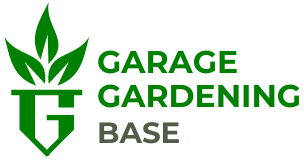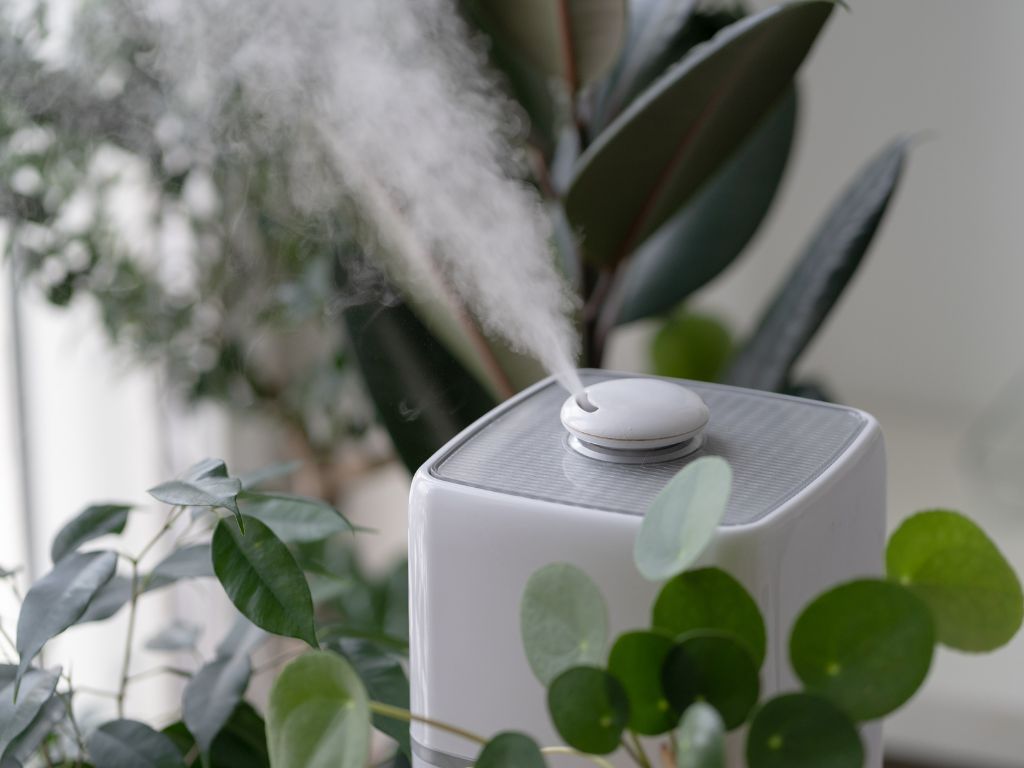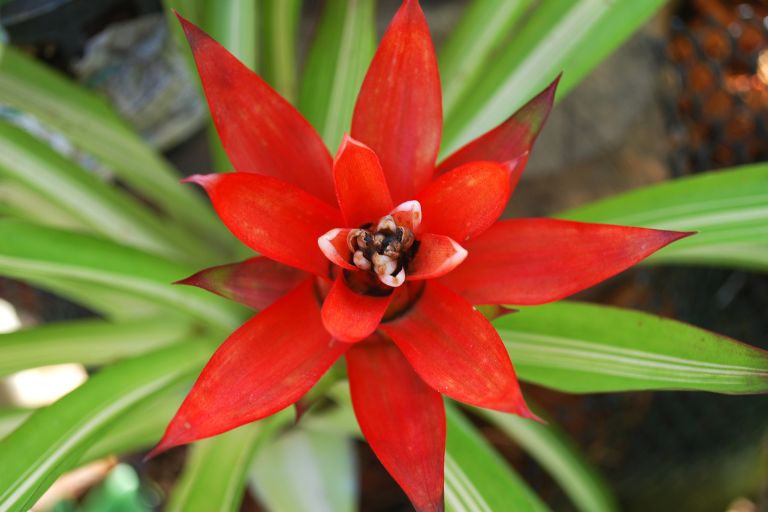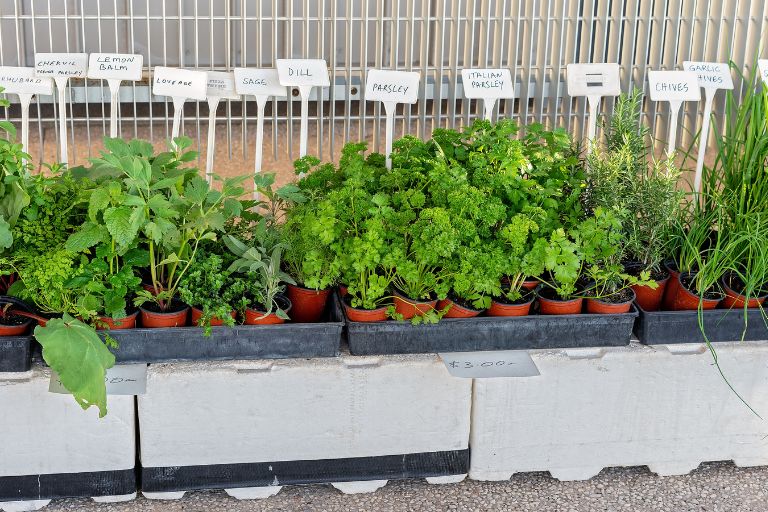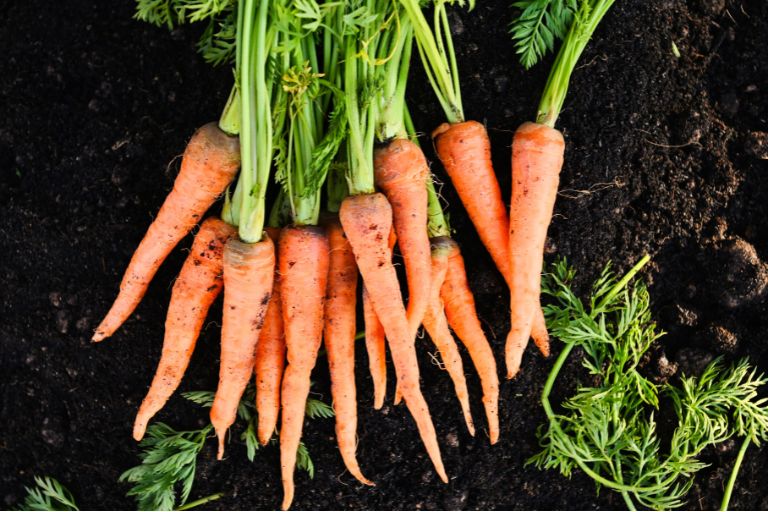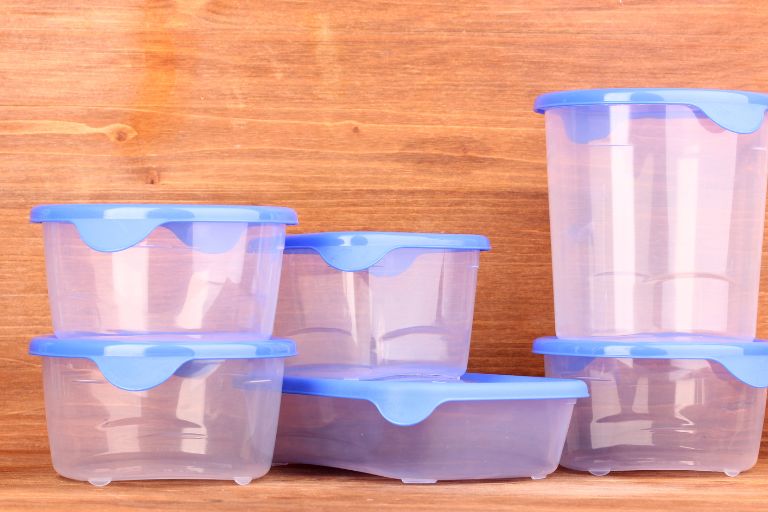Digging Deep: A Guide to Choosing the Right Soil for Your Garage Garden
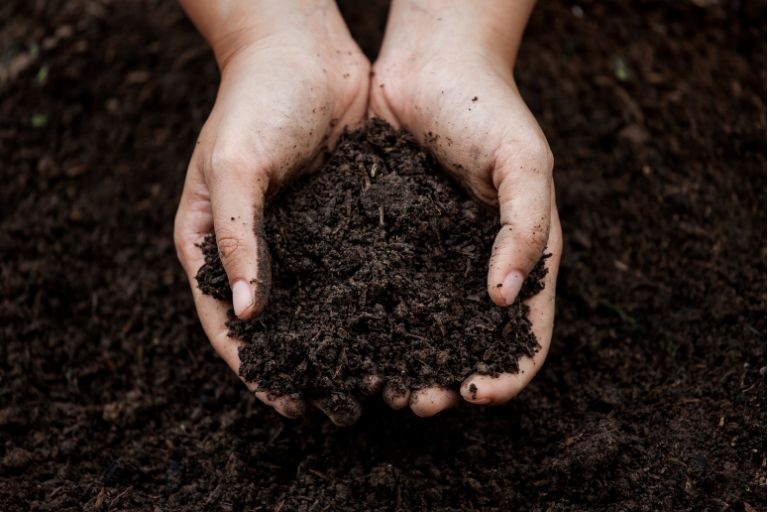
In the realm of garage gardening, where space constraints, lighting limitations and temperature fluctuations reign supreme, choosing the right soil is paramount. Garage gardening offers a unique opportunity for urban dwellers or those with limited outdoor space to grow greenery indoors. However, the controlled environment of a garage requires careful consideration of soil selection to ensure optimum plant growth.
Unlike outdoor gardens, garage spaces often lack access to natural sunlight and rely instead on artificial lighting sources. Consequently, the soil chosen must support plant growth in these conditions by providing sufficient nutrients and moisture for healthy development.
Temperature control is another critical aspect of garage gardening. Garages can experience significant temperature fluctuations, from sweltering heat in the summer to chilly conditions in the winter. The soil chosen should provide good insulation and moisture retention to buffer the plants against these fluctuations and maintain a stable root environment.
In addition, the limited space available in a garage garden requires efficient use of resources, including soil. Gardeners need to choose a soil that maximises plant productivity while minimising waste. Optimal drainage and aeration are essential to promote healthy root growth without causing waterlogging or compaction.
Soil selection should be based on the specific needs of the plants being grown. Different plant species have different requirements for soil pH, texture and nutrient composition. By choosing a soil that meets these needs, gardeners can create an ideal growing environment that supports vibrant growth and bountiful harvests.
In the following sections, we’ll explore the different types of soils suitable for garage gardening, highlighting their characteristics, benefits and considerations for use. Whether you’re growing herbs, vegetables or ornamental plants, choosing the right soil is the first step in creating a thriving garage garden that will flourish all year round.
Understanding Your Garage Garden’s Needs
Gardening in a garage presents both challenges and opportunities that require careful consideration to ensure successful plant growth. From limited space to variable lighting and temperature control, garage gardening requires innovative solutions and strategic planning. One of the most important factors in overcoming these challenges is the choice of soil that meets the specific needs of the plants being grown.
Limited space is perhaps one of the biggest challenges of garage gardening. Unlike traditional outdoor gardens, garage spaces typically offer limited areas for plant cultivation. This limitation requires gardeners to be strategic in their use of space, maximising efficiency without compromising plant health. Choosing the right soil is of paramount importance as it has a direct impact on the growth and development of plants in confined spaces.
In addition, lighting conditions in a garage environment can be unpredictable and inadequate for certain plant species. Unlike outdoor gardens that benefit from natural sunlight, garage gardens often rely on artificial lighting sources that may not adequately mimic the full spectrum of sunlight required for optimal plant growth. As a result, gardeners must carefully select plants that are tolerant of low light conditions or invest in supplemental grow lights to ensure adequate lighting. Soil selection plays a crucial role in supporting plants’ ability to thrive under artificial lighting by providing essential nutrients and maintaining proper moisture levels.
Another challenge in garage gardening, especially in regions with extreme climates, is temperature control. Garages can experience temperature fluctuations, from sweltering heat in the summer to freezing conditions in the winter. These temperature fluctuations can stress plants and affect their growth and productivity. Choosing a soil that provides good insulation and moisture retention can help buffer plants against temperature fluctuations and maintain a stable root environment. In addition, incorporating organic matter into the soil can improve its thermal properties and provide a more favourable growing environment for plants.
Despite these challenges, garage gardening also presents unique opportunities for creative experimentation and customization. With careful planning and resourcefulness, gardeners can transform their garage spaces into productive growing areas. Vertical gardening techniques, such as trellising and stacking containers, can maximize vertical space utilization, allowing for greater plant diversity and productivity. Additionally, container gardening offers flexibility in plant placement, enabling gardeners to adapt to changing lighting and temperature conditions.
Moreover, garage gardening provides an opportunity for year-round cultivation, independent of seasonal changes and weather conditions. With the right soil selection and environmental control measures, gardeners can extend their growing seasons and enjoy fresh produce and flowers throughout the year. Choosing soil that meets the specific needs of plants, such as moisture retention, drainage, and nutrient content, is essential for sustaining healthy growth in indoor environments.
Types of Soil
When it comes to garage gardening, choosing the right soil is crucial to the success of your plants. There are three main types of soil suitable for garage gardening: potting mixes, garden soil and speciality mixes. Each type has its own set of characteristics and considerations that affect its suitability for different gardening scenarios.
Potting mixes, also known as potting soil or potting compost, are specially formulated for container gardening. These mixes typically consist of a blend of organic matter such as peat moss, composted bark and perlite or vermiculite for aeration and drainage. They provide excellent drainage, preventing waterlogging and root rot in container plants. However, they may not contain enough nutrients to sustain plants over a long period of time, so regular fertilisation is required. In addition, potting mixes can dry out quickly, requiring frequent watering, especially in warm or dry environments. Although their light weight makes them ideal for use in containers, high quality potting mixes can be more expensive than other types of soil, potentially adding to the cost of container gardening projects.
Garden soil, also known as topsoil or loam, is the natural soil found in outdoor gardens. It is a mixture of mineral particles, organic matter, water and air. Garden soil is rich, containing a wide range of nutrients essential for plant growth and supporting healthy development without the need for frequent fertilisation. However, the drainage properties of garden soil can vary depending on its composition and texture, which can lead to problems such as waterlogging or compaction. In addition, garden soil can be heavy, especially when wet, making it less suitable for use in containers or raised beds that require frequent movement. Despite these drawbacks, garden soil is inexpensive and can often be obtained cheaply or even for free by composting organic waste or amending existing soil.
Speciality blends are specially formulated soil mixes designed for specific plant types or growing conditions. These blends often contain a combination of organic and inorganic materials to meet the specific needs of plants. Speciality blends can provide targeted nutrient levels, improved drainage and aeration, and even disease resistance. However, they can be more expensive than generic potting mixes or garden soil due to their bespoke formulation and specialised ingredients. Availability can also be limited, requiring special orders or sourcing from specialist suppliers. In addition, creating or sourcing the right speciality mix for your specific needs may require research and experimentation, adding complexity to the soil selection process.
Container Gardening
Gardening in a garage presents unique challenges and opportunities, and one of the key elements to consider is choosing the right containers. Container gardening allows you to maximise space, control soil conditions and create a customised environment for your plants. The containers you choose play a crucial role in supporting healthy plant growth, and their material, size and design can have a significant impact on soil performance and overall gardening success.
Container selection is closely linked to soil selection, as the two elements work together to create an optimal growing environment for your plants. Let’s explore the importance of container selection and its relationship to soil type, as well as insights into container materials and sizes that best complement your gardening goals.
Significance of Container Selection – Containers serve as the primary habitat for your plants, holding soil and providing structural support for root growth. The type of container you choose will directly influence factors such as soil moisture retention, aeration and temperature regulation. Container size also affects plant growth and development, as well as soil moisture and nutrient availability. When gardening in a garage, where space may be limited and environmental conditions cannot be controlled, choosing the right containers becomes even more critical. The containers you choose should be compatible with the type of soil you have chosen and be conducive to the specific needs of your plants.
Container materials – Containers come in a variety of materials, each with its own unique characteristics that affect soil performance and plant health. Common container materials include plastic, terracotta, ceramic, wood and metal.
Plastic Containers – Plastic containers are lightweight, durable and affordable, making them a popular choice for container gardening. They retain moisture well and are less susceptible to temperature fluctuations, providing a stable environment for plant roots. However, plastic containers may not provide adequate aeration for roots, especially if they lack drainage holes. Gardeners should ensure proper drainage to prevent waterlogging and root rot.
Terracotta and ceramic pots – Terracotta and ceramic pots are porous, allowing for better aeration and moisture regulation. They provide a more natural environment for plant roots and can help prevent over-watering by allowing excess moisture to evaporate through the container walls. However, terracotta and ceramic pots may require more frequent watering due to evaporation, especially in hot or dry environments.
Wooden containers – Wooden containers, such as cedar or redwood planters, offer excellent insulation and moisture retention. They offer a rustic aesthetic and can be ideal for plants that prefer consistent moisture levels. However, wooden containers can deteriorate over time and require regular maintenance to prevent rot. Gardeners should use a liner to protect the wood and extend the life of the container.
Metal containers – Metal containers, such as galvanised steel or aluminium pots, are durable and lightweight. They provide good drainage and airflow for plant roots, but can heat up quickly in direct sunlight, causing the soil to dry out more quickly. Gardeners should monitor soil moisture levels and provide adequate shade or insulation to prevent overheating.
Container Sizes – Container size has a direct effect on plant growth and development, as well as soil moisture retention and nutrient availability. When choosing container sizes, consider the space available for gardening, the specific needs of your plants, and your gardening goals.
Small-scale gardening – For small-scale gardening or indoors, choose compact containers that fit your space, such as hanging baskets or window boxes. These containers are ideal for growing herbs, flowers or small vegetables and are easy to place on windowsills, countertops or shelves.
Large-scale gardening – If you have plenty of space and want to grow larger or deep-rooted plants, opt for larger containers that offer plenty of room for root growth. Raised beds, tall planters and half-barrels are good options for growing vegetables, fruit or ornamental plants in a garage garden. These containers offer plenty of room for plants to spread their roots and can accommodate larger or multiple plants.
Gardening goals – Consider your gardening goals and how they relate to the containers you choose. Whether you’re growing herbs, vegetables, flowers or ornamental plants, choose containers that meet your gardening needs and enhance the overall aesthetic of your garage garden.
Aesthetic appeal – In addition to functionality, consider the aesthetic appeal of your containers and how they contribute to the overall look and feel of your garage garden. Choose containers that complement your gardening style and enhance the visual appeal of your plants. Whether you prefer sleek and modern designs or rustic and natural materials, choose containers that reflect your personal taste and enhance the beauty of your garden.
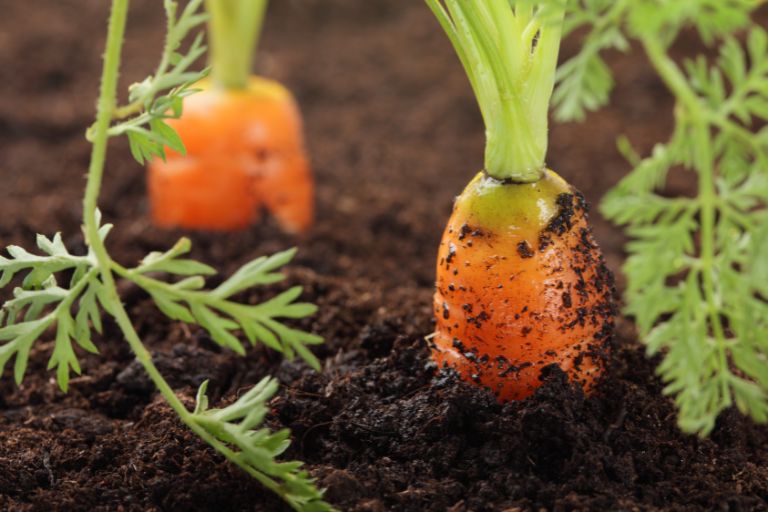
Soil Amendments and Enhancements
Incorporating soil amendments such as compost, perlite, vermiculite and organic matter into your gardening practices can significantly improve the quality of your soil and promote optimal plant growth. Each of these amendments offers unique benefits that contribute to the structure, fertility and overall health of the soil.
Compost
Compost is often referred to as ‘black gold’ in gardening circles because of its many benefits. Compost is a rich source of organic matter, teeming with beneficial micro-organisms that help break down organic matter into nutrients that plants can easily absorb. When incorporated into the soil, compost improves its structure by increasing its water holding capacity and improving aeration. This allows plant roots to penetrate the soil more easily to access vital nutrients and water. Compost also adds essential nutrients to the soil, reducing the need for synthetic fertilisers. To apply compost, spread a layer evenly over the soil surface and work it in gently with a shovel or garden fork. Aim for a thickness of about 1 to 2 inches and repeat the process annually to maintain soil fertility.
Perlite
Perlite is a lightweight volcanic rock material commonly used as a soil amendment to improve drainage and aeration. It consists of small, porous particles that create air pockets in the soil, promoting root growth and preventing soil compaction. When mixed into the soil, perlite helps prevent waterlogging by improving drainage, allowing excess water to run off more efficiently. This prevents root rot and creates a healthier environment for plants. To incorporate perlite into your soil, mix it thoroughly with the soil at a ratio of approximately 1 part perlite to 3 parts soil. Avoid compacting the soil during mixing to maintain proper aeration.
Vermiculite
Vermiculite is a mineral-based soil amendment valued for its ability to improve soil moisture retention and aeration. Like perlite, vermiculite is made up of small particles that create air pockets in the soil, improving root growth and soil structure. However, vermiculite has the added benefit of retaining moisture, helping to keep the soil evenly moist and reducing the risk of water stress in plants. To incorporate vermiculite into your soil, mix it thoroughly with the soil at a ratio of approximately 1 part vermiculite to 3 parts soil. Ensure it is evenly distributed throughout the soil to maximise its benefits.
Organic matter
Organic matter, such as compost, leaf mould or well-rotted manure, is an essential component of healthy soil. Organic matter improves soil structure by binding soil particles together, creating larger aggregates that allow water, air and roots to penetrate more easily. It also provides a steady supply of nutrients to plants as it decomposes, reducing the need for synthetic fertilisers. In addition, organic matter improves soil biodiversity by providing habitat and food for beneficial micro-organisms. To incorporate organic matter into your soil, spread a layer evenly over the surface and gently work it into the top few inches of soil using a shovel or garden fork. Aim for a thickness of about 1 to 2 inches and repeat the process annually or as needed to maintain soil health.
Environmental Considerations
In today’s world of environmental concerns, it’s vital for gardeners to prioritise practices that minimise their carbon footprint and contribute to a healthier planet.
Water conservation is a critical aspect of sustainable gardening, especially in a workshop environment where water resources may be limited. Choosing soils that promote efficient water use, such as mixes with good drainage and moisture retention properties, can help reduce water waste and support sustainable gardening practices. In addition, incorporating soil amendments such as compost or organic matter can improve soil structure, allowing it to retain moisture more effectively and reduce the need for frequent watering.
Organic practices go hand in hand with sustainability as they prioritise natural and environmentally friendly methods of soil management and plant care. When choosing soil products for your garage garden, look for organic options that are free of synthetic chemicals and pesticides. Organic soils not only support healthier plant growth, but also help protect the surrounding environment by reducing the release of harmful chemicals into soil and water systems.
In addition, considering local sourcing when choosing soil products can have a significant impact on the sustainability of your garage garden. Locally sourced soils require less energy to transport, reducing greenhouse gas emissions associated with long-distance shipping. Supporting local businesses also strengthens the local economy and builds community resilience. Look for soil suppliers in your area that prioritise sustainable practices and offer products made from locally sourced materials.
Garage gardeners can play a role in conserving natural resources, promoting biodiversity and mitigating the effects of climate change by prioritising factors such as water conservation, organic practices and local sourcing. Ultimately, cultivating a sustainable garage garden not only benefits the environment, but also improves the health and vitality of the garden itself, creating a win-win situation for both gardeners and the planet.
Tips for Successful Gardening
Maintaining a thriving garden in a garage environment requires a nuanced approach to soil management, watering techniques, pest control and seasonal maintenance. By paying careful attention to these aspects, gardeners can create an optimal growing environment that promotes healthy soil and vibrant plant growth throughout the year. Let’s take a closer look at each of these areas:
Watering techniques
Watering is a fundamental aspect of gardening, yet it’s often overlooked or misunderstood. In a garage garden, where environmental conditions can vary and air circulation may be limited, proper watering techniques are crucial to plant health. Regular monitoring of soil moisture levels is essential. This can be done by inserting a finger into the soil to assess its moisture content. Water plants when the top inch of soil feels dry, but avoid overwatering as this can lead to root rot and other moisture-related problems.
Deep watering is key to encouraging healthy root development. Make sure the water penetrates deep into the soil and reaches the root zone. This can be achieved by watering slowly and deeply, allowing the water to soak in rather than run off the surface. When watering, use a watering can with a fine rose or a gentle spray nozzle to distribute the water evenly and avoid damaging delicate seedlings or young plants. Alternatively, drip irrigation systems or self-watering containers can provide a more consistent supply of moisture, especially when gardeners are away from home for long periods.
Mulching is another effective technique for conserving soil moisture. Applying a layer of organic mulch, such as straw, shredded leaves or compost, around plants helps to retain soil moisture, suppress weeds and regulate soil temperature. Mulching also reduces water evaporation from the soil surface, minimising the need for frequent watering.
Pest Management
Pest management is a critical aspect of maintaining a healthy garden, whether indoors or outdoors. In a garage environment, where pests may have limited access to natural predators, proactive pest control measures are essential. Regular plant inspection is the first line of defence against pests. Look for signs of pest infestation such as chewed leaves, distorted growth or the presence of insects such as aphids, spider mites or whiteflies. Early detection allows for prompt intervention and minimises damage to plants. Encouraging natural predators of garden pests is another effective pest management strategy. Provide habitat and food sources for beneficial insects such as ladybirds, lacewings and predatory mites. Avoid using broad-spectrum pesticides that harm beneficial insects and disrupt the natural balance of the ecosystem.
Companion planting is a proven method of pest control in the garden. By planting pest-repellent crops next to susceptible plants, gardeners can deter pests and reduce the need for chemical intervention. For example, marigolds are known to repel nematodes, while aromatic herbs such as basil and mint can deter aphids and other insects. When pest infestations do occur, organic pest control methods can be used to manage them effectively. Options include neem oil, insecticidal soap and diatomaceous earth, which target pests while minimising harm to beneficial insects and the environment. These natural remedies are safe to use and can be applied directly to affected plants as needed.
Seasonal maintenance
Seasonal maintenance is essential to keep a garage garden healthy and productive throughout the year. This includes planning for seasonal changes in temperature, light availability and plant growth requirements.
When selecting plants for your garage garden, consider their seasonal preferences and choose varieties that are well suited to the conditions in your garage. For example, cool-season crops such as lettuce, spinach and kale thrive in cooler temperatures, while heat-tolerant crops such as tomatoes, peppers and herbs prefer warmer conditions.
Crop rotation is another important practice for maintaining soil health and reducing the risk of pests and diseases. Rotating crops to different locations in your garage garden each year helps to prevent soil depletion and minimises pest and disease pressure. This also allows for more efficient use of nutrients and promotes balanced soil fertility.
Regular soil testing is recommended to assess nutrient levels, pH balance and general soil health. Soil testing can be carried out using DIY kits or by sending soil samples to a laboratory for analysis. Based on the results, soil amendments and fertiliser applications can be adjusted to maintain optimal growing conditions for your plants. Pruning and maintenance are ongoing tasks that should be carried out throughout the year to keep your garage garden tidy and productive.
Prune plants regularly to remove dead or diseased foliage, promote airflow and encourage healthy growth. Clean and disinfect garden tools between uses to prevent the spread of disease and pests.
Overwintering is a consideration for gardeners in colder climates where garage temperatures can drop below freezing. Plan ahead by selecting cold-hardy plants and providing adequate frost protection. Frost blankets, cloches or insulated containers can help protect tender plants from freezing temperatures and extend the growing season into the winter months.
Maintaining a thriving garage garden is a rewarding endeavour that requires careful attention to soil management, watering techniques, pest control and seasonal maintenance. By implementing practical tips and tricks tailored to the unique challenges of indoor gardening, gardeners can create an optimal growing environment that supports healthy soil and vibrant plant growth throughout the year.
Watering techniques such as regular soil moisture monitoring, deep watering and mulching help conserve water and promote healthy root development. Pest management strategies such as regular inspections, encouraging natural predators, companion planting and organic pest control methods minimise pest damage while preserving beneficial insects and the ecosystem.
Seasonal maintenance practices such as planning for seasonal changes, crop rotation, soil testing, pruning and overwintering ensure the continued health and productivity of the garage garden. By incorporating these practices into their gardening routine, gardeners can create a sustainable and eco-friendly environment that promotes plant growth, supports biodiversity and contributes to a healthier planet.
At its core, maintaining a garage garden is not just about growing plants, it is about cultivating a deeper connection with nature and promoting sustainable living practices. By caring for the soil and plants, gardeners can enjoy the fruits of their labour while contributing to the health and well-being of the environment.
